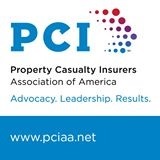PCI’s 5 Step Disaster Reality Check for Financial Preparedness and Insurance Readiness
CHICAGO – (RealEstateRama) — Just within the last month the U.S. experienced the first hurricane hitting Florida in more than a decade, historic flooding in Louisiana, and the strongest earthquake on record in Oklahoma. Because Mother Nature has the power to change lives overnight, the Property Casualty Insurers Association of America (PCI) is urging property owners to take a “Disaster Reality Check” regarding their preparedness and ability to recover from a natural disaster or other emergency.

“Insurance is the critical back-up plan that enables people to financially recover from a disaster,” said Chris Hackett, PCI’s senior director of personal lines policy. “National Preparedness Month is an excellent time for homeowners and renters to not only make sure they have their emergency supplies in order, but also review their insurance policy. The first step to financial preparedness involves talking with your insurance agent or company to make sure you have the right coverage to rebuild. While wildfires and winter storm damage is covered under a typical homeowners or renters insurance policy, there are specialized coverages to protect homes and belongings from earthquakes and floods. Depending on where you live it’s vital to consider all the risks you face.”
PCI, along with many of our members, are participating in National Preparedness Month and the September 30, National PrepareAthon Day. As a NOAA Weather Ready Nation Ambassador, PCI takes great pride in being part of the of a national collation made up of federal agencies, first responders, private sector companies, schools and community organizations that work throughout the year and promote September as National Preparedness month for all natural catastrophes.
PCI’s infographic which shows you exactly how to complete a disaster reality check.
PCI Insurance Checklist:
1.) Talk with your insurance agent or company about your insurance policy. Check your deductible and make sure you have a solid understanding of your current coverage. Do you have a replacement cost policy that replaces everything with materials of like, kind and quality or an actual cash policy that takes depreciation into account and costs less but pays out less following a disaster?
2.) Assess whether you have adequate home, renters, auto and other property coverage. Property damage can take a tremendous financial and mental toll. Knowing you have proper coverage will give you peace of mind. If you rent your home, consider bundling coverage with your auto policy.
3.) Review additional coverage options, particularly flood coverage. Heavy rains and storm surge can cause extensive flood damage in coastal and inland areas. Keep in mind that there’s typically a 30-day waiting period between the date of purchase and when flood coverage takes effect. Also, depending on where you live it might be a good idea to check into purchasing earthquake insurance. The standard homeowners policy does not cover losses that result from earthquakes, due to the unpredictability and widespread catastrophic nature of these events. The deductible for earthquake insurance varies based on the policy and the insurer. These deductibles are generally based on a percentage of the replacement value of the home. The deductible can range from two to 25 percent of the home’s replacement value.
4.) Update Your Policy After Home Improvements. If you update a bathroom or kitchen, be sure to call your company or agent to tell them about the changes. If you add square footage or upgrade materials, your policy will need to be updated to cover those changes.
5.) Maintain Insurance. If your home is paid off, be sure to maintain property insurance. Do not be caught after a major disaster with no way to rebuild your home or replace your belongings. The maximum federal grant for disaster recovery is under $40,000 which is not nearly enough to rebuild a home. Check with loved ones that have retired and paid off their mortgage to make sure they continue to carry homeowners coverage.
For more tips on how to prepare for a natural disasters follow us @PCIAA use #NatlPrep or #HaveAPlan
PCI promotes and protects the viability of a competitive private insurance market for the benefit of consumers and insurers. PCI is composed of nearly 1,000 member companies, representing the broadest cross section of insurers of any national trade association. PCI members write $202 billion in annual premium, 35 percent of the nation’s property casualty insurance. Member companies write 42 percent of the U.S. automobile insurance market, 27 percent of the homeowners market, 33 percent of the commercial property and liability market and 34 percent of the private workers compensation market.
Nicole Mahrt-Ganley
916-440-1116








